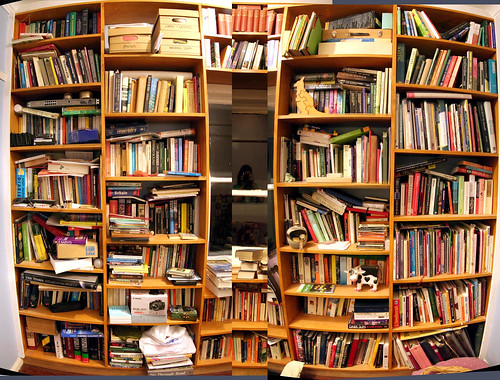
Tuesday, May 27, 2008
The Host: a Stephenie Meyer Adult Book

Monday, May 19, 2008
The Importance of Linking Writing with Science and Social Studies


Stead has found that:
In K-2 classrooms, 95% of writing experiences were with personal narrative and story.
By 6th grade, children will have spent 84% of writer’s workshop composing personal narratives, stories, and writing from prompts
- 73% of students read nonfiction at least 3 Reading Recovery levels below that of their fiction.
- 15% of students read nonfiction 3 grade levels below their fiction.
- By third grade, only 7% of students struggled with decoding nonfiction at their grade level.
- We teach decoding, how to get through text, but we spend little time helping them understand what the text is actually saying. ESL children can easily learn to decode but because it’s a 2nd language, they don’t have understanding of which words to use for concept. They can read at 28 level of Reading Recovery, but comprehension level of 4.
- You know which kids who are going to be your strongest readers and writers—it’s about oral comprehension.
- Students who were competent readers of nonfiction were also competent in reading fiction, but not vice versa (my emphasis).
- Boys were more competent than girls in comprehending nonfiction but girls read with better phrasing and pace.
- Boys slow their reading down because they want to make meaning of non-fiction. They do what every child should do—they fight to read.
- Children can read 3–4 levels above what they’re benchmarked on topics they’re interested in.
You can read through the notes to get the flavour of the presentation. The podcast is quite long (it's the whole presentation he gave at the conference) but I listened to it while I was working on other things.
But the gist is integration of curriculum - combining social studies/science, inquiry-based learning and non-fiction writing.
He also talks about shifting the use of the KWL strategy to the RAN strategy. KWL is only useful if the student has sound background knowledge. If a student has weak or incorrect background knowledge, then the second category of KWL (what I need to know) will also be weak because really the student doesn't know the right questions to ask - his research questions will not be set up correctly.
RAN - Reading and Analyzing Non Fiction Strategy
What We Think We Know Yes we were right New facts Wonderings Misconceptions
- Whatever the content area is—such as sharks—I am not going to start off with what do we know. As a class, I ask them, what do you THINK you know? Why is this better terminology than what we think we know?
This techniques allows for diagnostic assessment of background knowledge. This gives the teacher a way into kids' heads and allows the teacher to differentiate for the class. He says that kids will read books to confirm what they think they know - they are more engaged. This strategy changes the way kids read and is the basis of thinking and inquiry-based learning. When you use the RAN with social studies, this strategy will bring up bias and prejudices that the students have - a good thing to know so that this can be addressed in the unit.
Lots of really good information on this podcast - perhaps a personal summer professional learning opportunity as you'll need some time to listen to the podcast. Is That a Fact is available through our board's Professional Bookstore (only available to board staff).
Saturday, May 10, 2008
Betty on Blades

Saturday, May 3, 2008
A Short Post
For those of you who use Animoto, there is a new educator account that will allow you and your students to make videos longer than 30 seconds. Check it out here.
There is a new wiki made by librarians in Florida that has links to various 2.0 tools called
Web Tools 4u 2Use. It puts a number of Read Write web tools in one convenient space and since it's a wiki anyone can add to it as new tools become available.
Here's a link to a wiki called 50 Web 2.0 Ways to Tell a Digital Story. It shows how to combine traditional writing with other media. The list of 2.0 tools is extensive. I like it because it emphasizes the planning and preparation that must go into the work before the publishing (something that students have a hard time understanding sometimes).
Wes Fryer has a post on his Moving at the Speed of Creativity blog. It has ideas for summer professional learning. You can view his suggestions here. Most of this can be done from the comfort of your own home if you have a decent Internet connection (I don't have that great of an Internet plan but can still do most of the stuff I want except view video - takes forever to buffer).
I'm still having problems with the connection so that's all I'll post.





